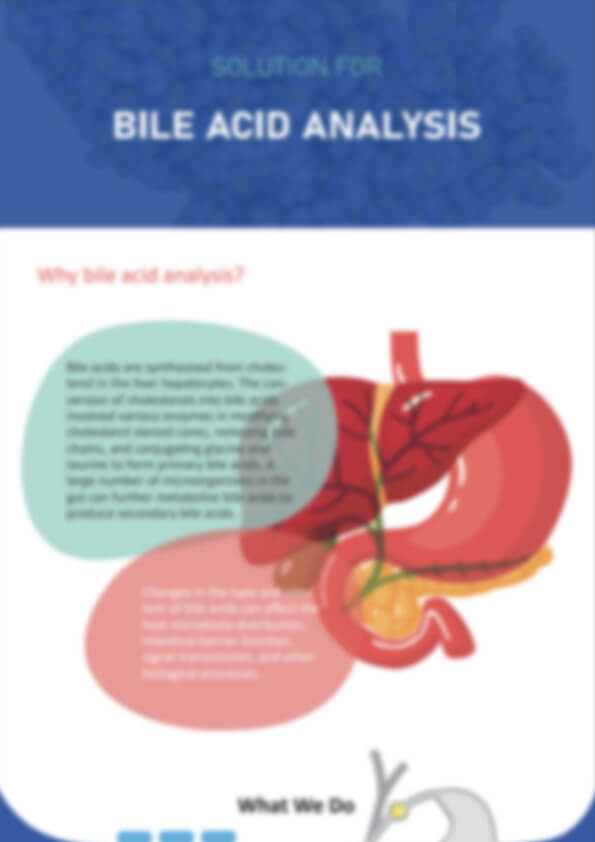Bile Acid Analysis
About the Infographics
Bile acids are synthesized from cholesterol in the liver hepatocytes. The conversion of cholesterols into bile acids involved various enzymes in modifying cholesterol steroid cores, removing side chains, and conjugating glycine and taurine to form primary bile acids. A large number of microorganisms in the gut can further metabolize bile acids to produce secondary bile acids. In addition, changes in the type and content of bile acids can affect the host microbiota distribution, intestinal barrier function, signal transmission, and other biological processes.
Utilizing the UPLC-MS/MS platform, Creative Proteomics can well separate a variety of bile acid isomers and isotopically label them as internal standards, thus accurately quantifying 70+ bile acids in various biological samples for different detection needs. Download for more information.
You may be interested in:

Note: Items with "*" are required.
We want to work with you to provide the information needed for scientific research to help do a better job.